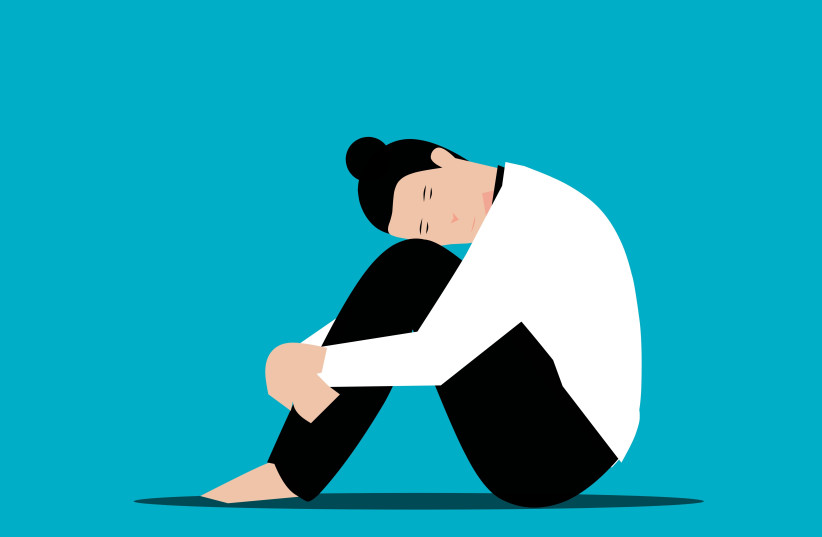 |
As people get older, all their organs and tissues, including the brain, age and shrink (atrophy). But if it can’t be prevented, can anything be done to slow it, besides crossword puzzles and sudoku?
Now, an international study led by researchers at Ben-Gurion University of the Negev (BGU) in Beersheba has shown how controlling blood sugar can significantly impact brain health and slow cognitive decline.
An 18-month dietary intervention as part of the DIRECT PLUS Brain MRI trial has just been published in The American Journal of Clinical Nutrition under the title “Glycemic control contributes to the neuroprotective effects of Mediterranean and green-Mediterranean diets on brain age: the DIRECT PLUS brain-magnetic resonance imaging randomized controlled trial.”
The DIRECT PLUS trial – one of the longest and largest brain MRI studies conducted to date – involved 284 participants who were divided into three dietary groups (an active control group, a traditional calorie-restricted Mediterranean diet, low in simple carbohydrates, or the green-Mediterranean diet). Whole-brain MRI measurements were taken before and after the 18-month trial to track changes in brain health.
The researchers used Hippocampal Occupancy (HOC) as a proxy for brain age that predicts future risk of dementia. HOC typically decreases with age. Although age-related brain atrophy is an unavoidable process, type-2 diabetes, inflammation, hypertension, high cholesterol, and accumulation of beta-amyloid and tau markers have all been found to be associated with accelerated brain atrophy and cognitive impairment.

It offers hope that lifestyle and dietary changes can slow brain aging. Brain age, as evaluated by MRI measurements of the hippocampus and lateral ventricles, reflects the biological aging of the brain, which can differ from a person’s chronological age.
Younger brains tend to have better cognitive health
One’s chronological age is the number of years lived, while brain age indicates the brain’s actual health. They are often not identical. Some people have a brain age younger or older than their chronological age.
A younger brain age suggests better cognitive health, while an older brain age may indicate accelerated aging and an increased risk of cognitive decline. Typically, as we age, the hippocampus shrinks and the lateral ventricles expand, serving as markers of brain aging.
The BGU researchers, who were joined by colleagues at Harvard University, Leipzig University, and others, were led by BGU doctoral student Dafna Pachter and overseen by Prof. Iris Shai, an expert in nutrition and epidemiology.
A previous study published two years ago in the same journal reported that Mediterranean (MED) and green-MED diets significantly attenuated age-related brain atrophy by about half within a year and a half. In the current study, the researchers aimed to understand the mechanism by which the slowing of brain atrophy occurs.
THE NEW study is one of the first large-scale trials to directly link dietary changes, particularly those associated with the Green-MED diet, to improved glycemic control and slower brain aging.
While further research is needed to fully understand the mechanisms at play, these results suggest a potential avenue for reducing the risk of age-related cognitive decline through relatively simple dietary adjustments. Some participants exhibited a brain age either younger or older than their chronological age.
The study found that a decline in HbA1c and key markers of long-term blood sugar levels are linked with significant positive changes in specific brain regions commonly affected by age-related atrophy.
Type-2 diabetics’ blood is regularly tested for hemoglobin a1c, which shows what their average blood sugar (glucose) level was over the past two to three months. Glucose is a type of sugar in your blood that comes from the foods you eat and is used by the cells for energy. A hormone called insulin helps glucose get into the body’s cells.
The Green Mediterranean (Green-MED) diet is rich in polyphenols from plant-based sources like Mankai (a high-protein aquatic plant) and green tea while being low in red and processed meats. The current study further strengthens this connection by suggesting that the Green-MED diet may not only support metabolic health but also exert protective effects on brain structure and function.
The results indicated that participants who managed to improve their blood sugar levels and achieve normal glucose status experienced a more pronounced attenuation of brain aging. Notably, those who consumed higher amounts of green tea and aquatic Mankai duckweed shakes demonstrated the most significant improvements in both blood sugar levels and brain health.
Shai, who is also an adjunct professor at Harvard and an honorary professor at Leipzig University, explained that “maintaining low blood sugar levels, even within the normal range, shows promise for preserving a younger brain, especially when combined with a healthy diet and regular physical activity. Specifically, polyphenols found in plant-based foods may cross the blood-brain barrier and help reduce brain inflammation, which is crucial for memory.”
Pachter, who was the paper’s first author of the paper, added that “this trial offers a safe approach to potentially slow down our brain aging, by adopting the components of a green-Mediterranean diet.”
















